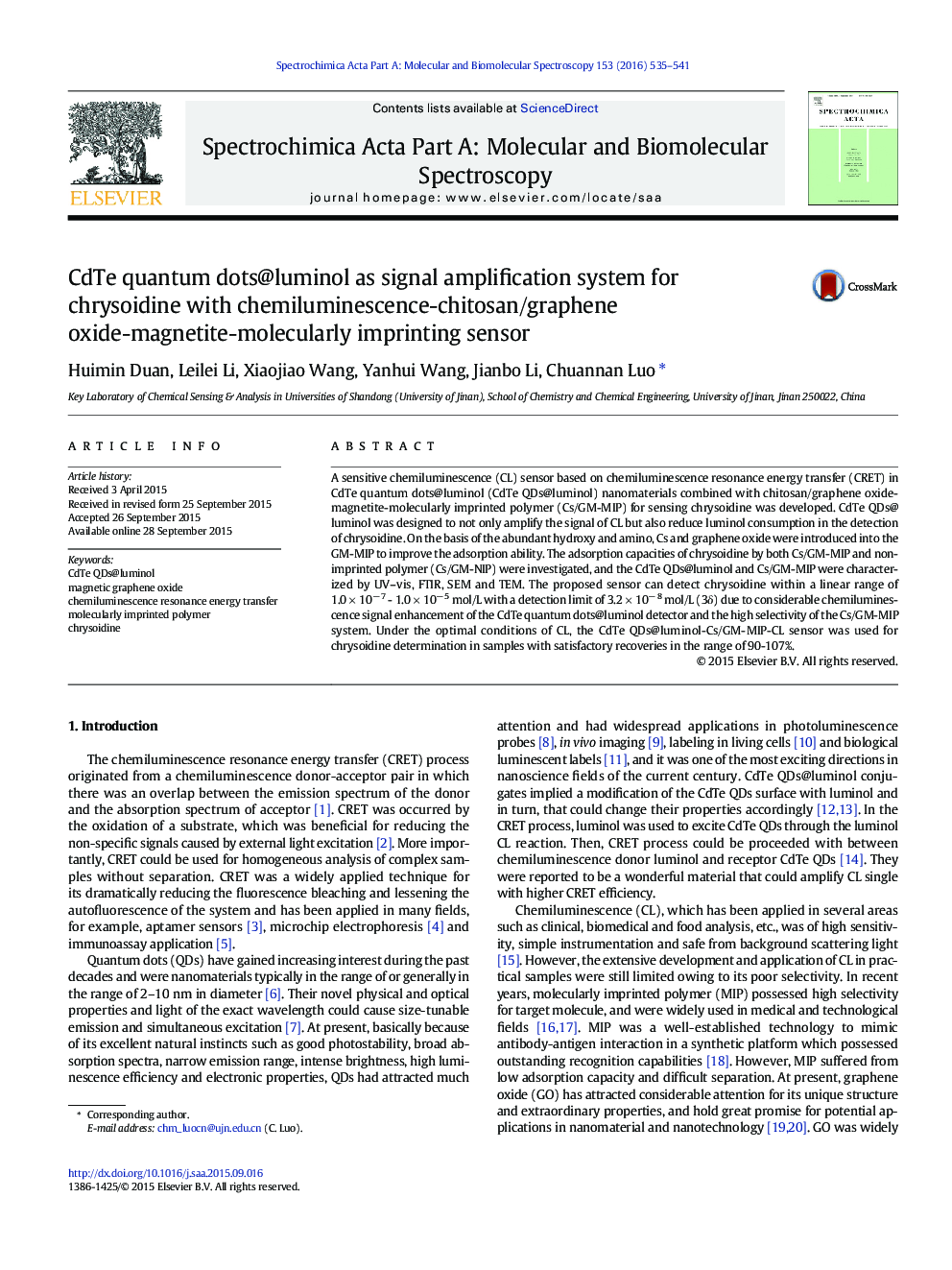| Article ID | Journal | Published Year | Pages | File Type |
|---|---|---|---|---|
| 1228760 | Spectrochimica Acta Part A: Molecular and Biomolecular Spectroscopy | 2016 | 7 Pages |
•The CL signal was amplified by intramolecular CRET in CdTe QDs@luminol•Chitosan/graphene oxide-magnetite-molecular imprinted polymers were introduced•Detection limit was lower than conventional methods for CL sensing
A sensitive chemiluminescence (CL) sensor based on chemiluminescence resonance energy transfer (CRET) in CdTe quantum dots@luminol (CdTe QDs@luminol) nanomaterials combined with chitosan/graphene oxide-magnetite-molecularly imprinted polymer (Cs/GM-MIP) for sensing chrysoidine was developed. CdTe QDs@luminol was designed to not only amplify the signal of CL but also reduce luminol consumption in the detection of chrysoidine. On the basis of the abundant hydroxy and amino, Cs and graphene oxide were introduced into the GM-MIP to improve the adsorption ability. The adsorption capacities of chrysoidine by both Cs/GM-MIP and non-imprinted polymer (Cs/GM-NIP) were investigated, and the CdTe QDs@luminol and Cs/GM-MIP were characterized by UV–vis, FTIR, SEM and TEM. The proposed sensor can detect chrysoidine within a linear range of 1.0 × 10− 7 - 1.0 × 10− 5 mol/L with a detection limit of 3.2 × 10− 8 mol/L (3δ) due to considerable chemiluminescence signal enhancement of the CdTe quantum dots@luminol detector and the high selectivity of the Cs/GM-MIP system. Under the optimal conditions of CL, the CdTe QDs@luminol-Cs/GM-MIP-CL sensor was used for chrysoidine determination in samples with satisfactory recoveries in the range of 90-107%.
Graphical abstractFigure optionsDownload full-size imageDownload as PowerPoint slide
